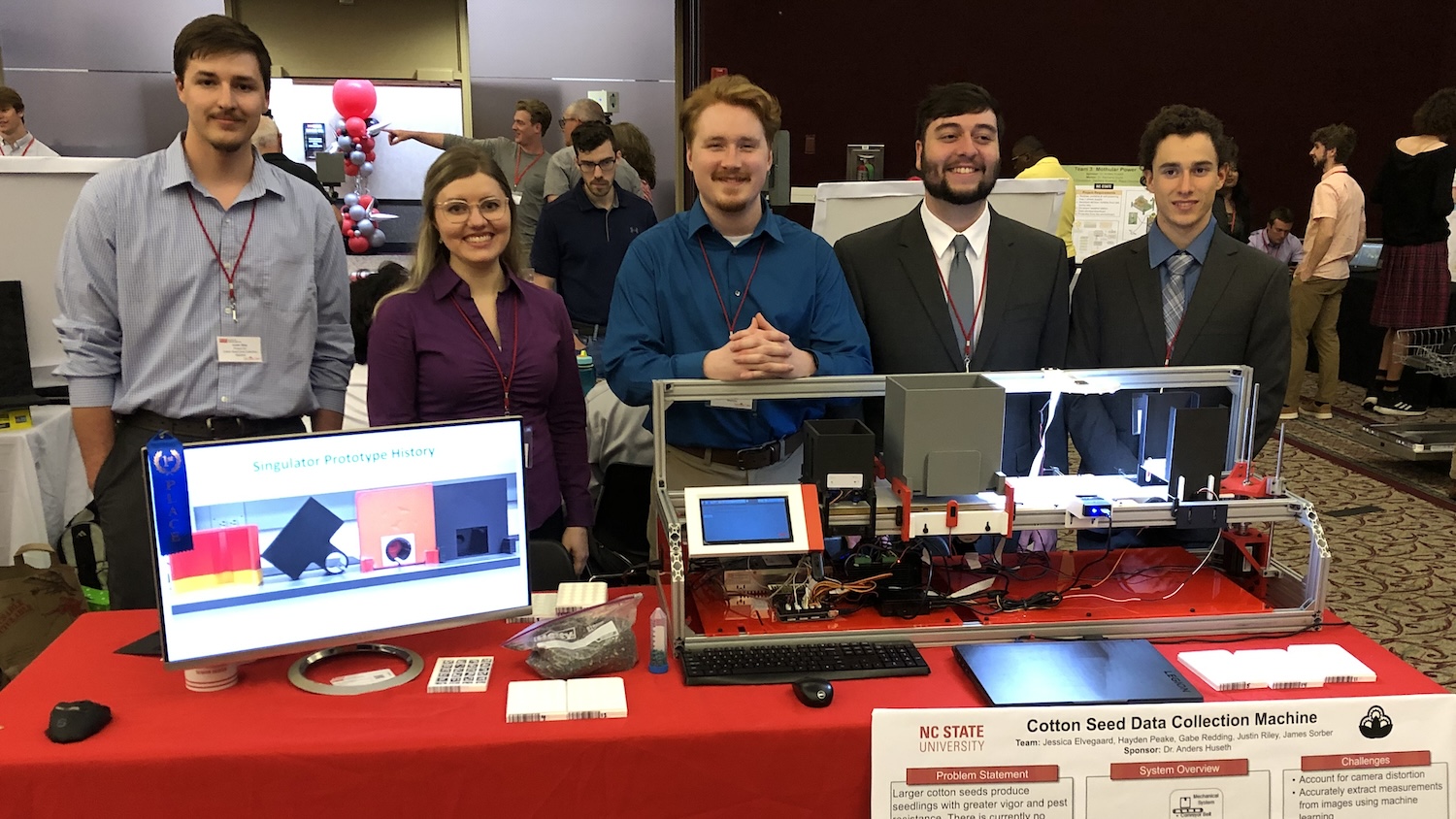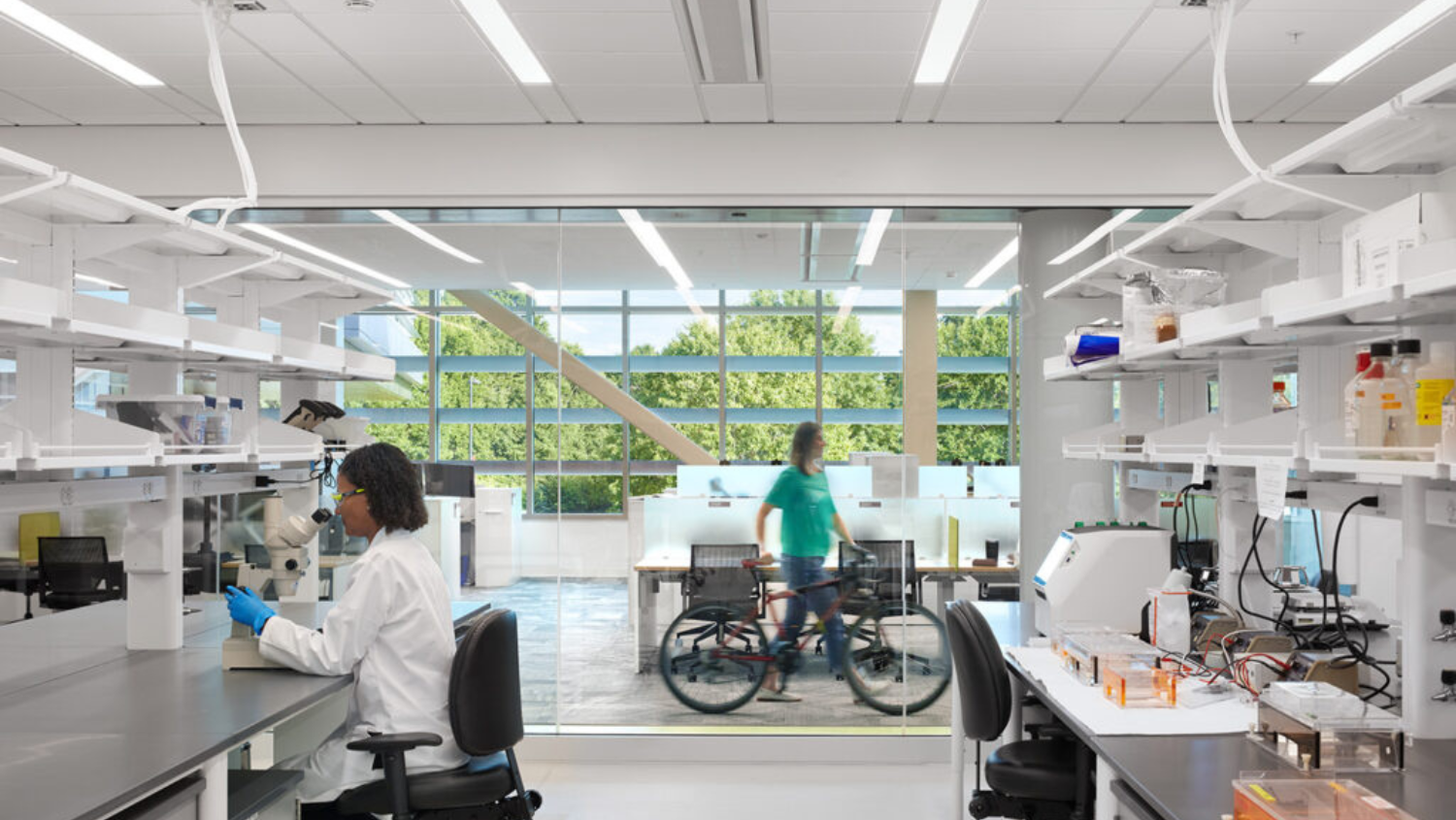NC State Students Pair Machine Learning, Robotics To Improve Ag Research
Their machine sorts cotton seeds by size so that scientists can field-test whether small cotton seeds are more susceptible than larger seeds to a major insect pest. Cotton is one of the North Carolina's top crops.

Thanks in large part to a student-developed machine that can “see” and sort seeds by size, a new NC State University project could shed more light on how seed sizes influence cotton plants’ susceptibility to an important insect pest.
Five seniors in electrical and computer engineering completed two semesters of work to train their computerized machine how to automatically detect seed size and then use robotics to separate the seeds by size. The team won first place in the machine learning division of their department’s senior design competition.
The students’ machine will play a key role in an upcoming field trial at the Sandhills Research Station in Montgomery County.
Anders Huseth, an associate professor in NC State’s Department of Entomology and Plant Pathology and a faculty member with the N.C. Plant Sciences Institute, said the trial is designed to determine if small cotton seeds result in more damage from thrips, a pest that causes crop losses throughout the U.S. cotton belt.
The machine is a major step forward for … insect research and seed characterization in general.
When farmers get bags of seeds, some of them have a mix of large and small seeds, while others are more consistent. Huseth thinks that smaller seeds and their resulting seedlings might be more susceptible to thrips because the plants may grow slower and are subject to more injury for longer periods. However, the hypothesis hasn’t been field-tested. That’s because separating seeds by size manually would be challenging, Huseth said.
The students solved that dilemma.
How it works
“Their machine was designed to automatically separate the seeds, by size, into labeled wells in custom printed trays. The conveyor moves the tray into position in front of a barcode reader which logs the tray identity,” Huseth explained. “A camera takes an image and calculates the dimensions of each individual seed. The data is compiled into a database that includes individual seed dimensions and estimated mass. The trays are moved to the end of the conveyor and automatically stacked for the user.”
Team members were Jessica Elvegaard, Hayden Peake, Gabe Redding, Justin Riley and James Sorber. They created the machine in the Makerspace of NC State’s Plant Sciences Building by 3D printing plastic components and using other equipment to fabricate the electronics and supporting structures.
After graduating in May, Elvegaard, the team’s leader, hopes to enter the field of robotics, mechatronics, material science or embedded systems – ones that combine both computer software and hardware. She said, “This project introduced me to working with embedded systems and reminded me how much I enjoy mechanical design.”
Elvegaard hopes that the machine accelerates Huseth’s research, and Huseth believes it will.
The machine, he said, is a “major step forward for our insect research and seed characterization in general.” It and other N.C. Plant Sciences Initiative projects using high-throughput phenotyping platforms are aimed at pushing agricultural research and technology forward.
Such projects “will help close the loop between entomological and plant physiology from the lab to the field,” Huseth said.


